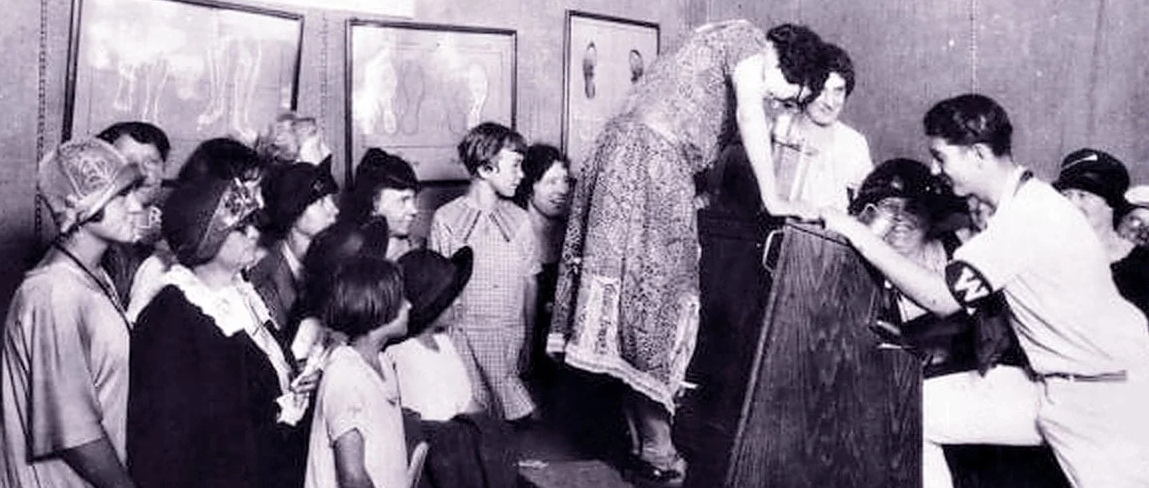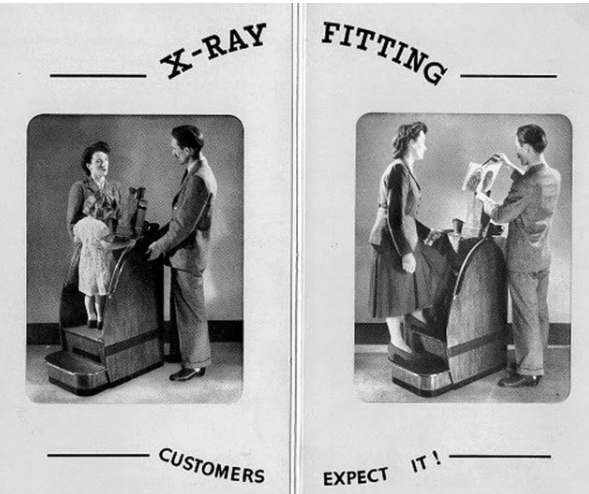
At the beginning of the 20th Century, a lot of promises were made about how science and technology would improve the quality of our daily lives. And for most of us, science has delivered on its promise to create a better world, with smarter medicine, safer transportation, lightning-fast communication and, of course, a perfectly fitting pair of shoes.
Huh?
Yep, just a hundred years ago, we were promised a more scientific, more accurate way to select and purchase proper fitting footwear—for the whole family, especially the kids! This newly discovered technology was deemed safe and virtually guaranteed a perfect fitting pair of penny loafers every time.
The shoe-fitting fluoroscope was the first commercial, wide-spread practical application of X-ray technology. The science and health claims made by Manufacturers like the Adrian X-Ray Shoe Fitter Company, appeared almost too good to be true, which they were. Much too good.
“They’ll Need Their Feet All Through Life!” states an advertisement.
“Every parent will want to hear this important news!” says another.
“Now, at last, you can be certain that your children’s foot health is not being jeopardized by improperly fitting shoes.”
The fluoroscope was first developed by Wilhelm Rontgen in 1895 and was comprised of an X-ray source (tube), and a fluorescent screen, between which the patient would be positioned. Rontgen basically used X-rays to see through human skin and create real-time moving images of a person’s insides on a screen.
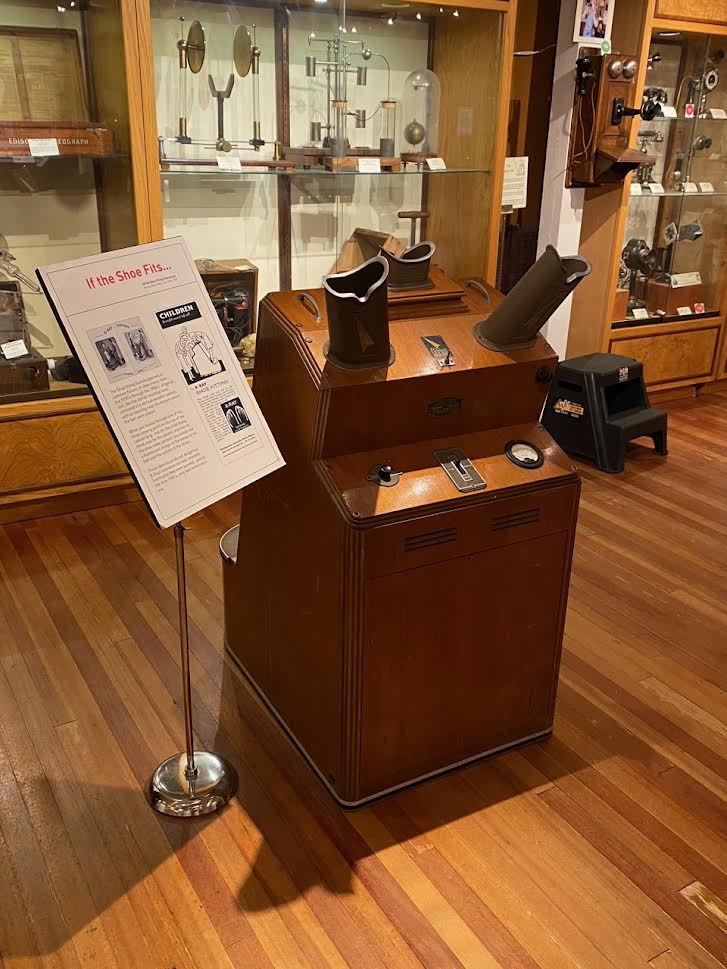
The first shoe-fitting fluoroscope was invented almost simultaneously in Europe and in separate cities in the United States. In Milwaukee, Clarence Karrer, who worked for his father’s X-ray equipment business, claimed to have invented a fluoroscope machine in 1924, while in Boston, Dr. Jacob Lowe is said to have invented a similar machine to help diagnose veterans with foot problems. Lowe’s patent was approved in 1927, and the Adrian Company of Milwaukee, Wisconsin, soon began production.
The Adrian machine is a 4-foot-tall vertical wooden cabinet with a step-up opening where the child’s feet were placed. There is a viewing port for the child, and two additional viewing ports for the parent and salesperson.
The salesperson then sets the amperage, cranks the timer, and manipulates the pointer, as all three gaze at the glowing, fluorescent image of the bones of the child’s feet, while simultaneously bathed in loose radiation. Children were instructed to wiggle their toes to demonstrate how much room there was inside the shoe, with the bones of the feet and the outline of the shoes clearly visible to all.
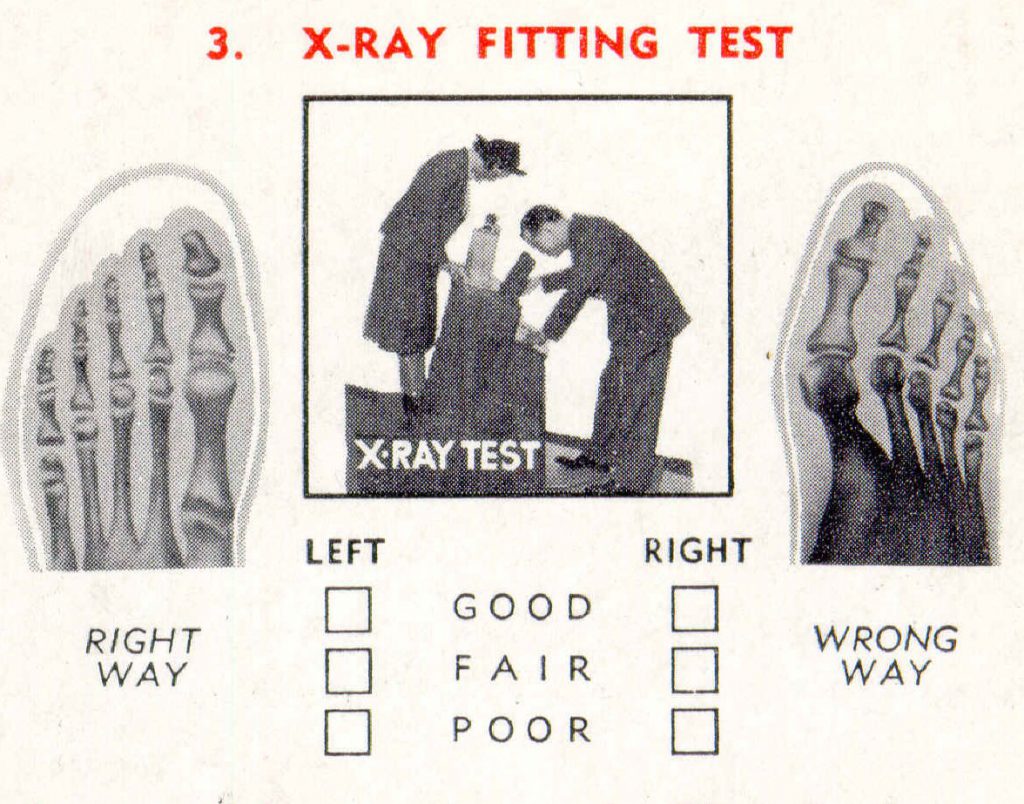
The fluoroscope became a huge hit for the shoe industry, and soon thousands of machines were installed in all 48 states. Though the machines were expensive, and took up a lot of floor space, they attracted customers like never before. It became a group activity–especially on weekends–as kids lined-up for the thrill of seeing clear-through their shoes, right-through their skin, and watch as they manipulate the complex bones of their very own feet—in real time. How fun it seemed, to be bathed in the green glow of X-ray radiation, how miraculous, how modern, how fun!
But is it really the best way to buy a pair of shoes? Is it really better to see the position of the bones of your feet right through your shoe? Is it really a better fit, or just a harmless sales gimmick? Unfortunately, it was neither. In the years after World War 2, researchers learned more and more about the damaging effects of radiation exposure, and the shoe-fitting fluoroscope came under greater scrutiny.
Simply put, when you (the customer) put your feet in a shoe-fitting fluoroscope, you were effectively standing on top of a bare, naked X-ray tube. There is virtually nothing insulating or protecting you, or anyone else, from the dangerous radiation scattering up and in all directions.
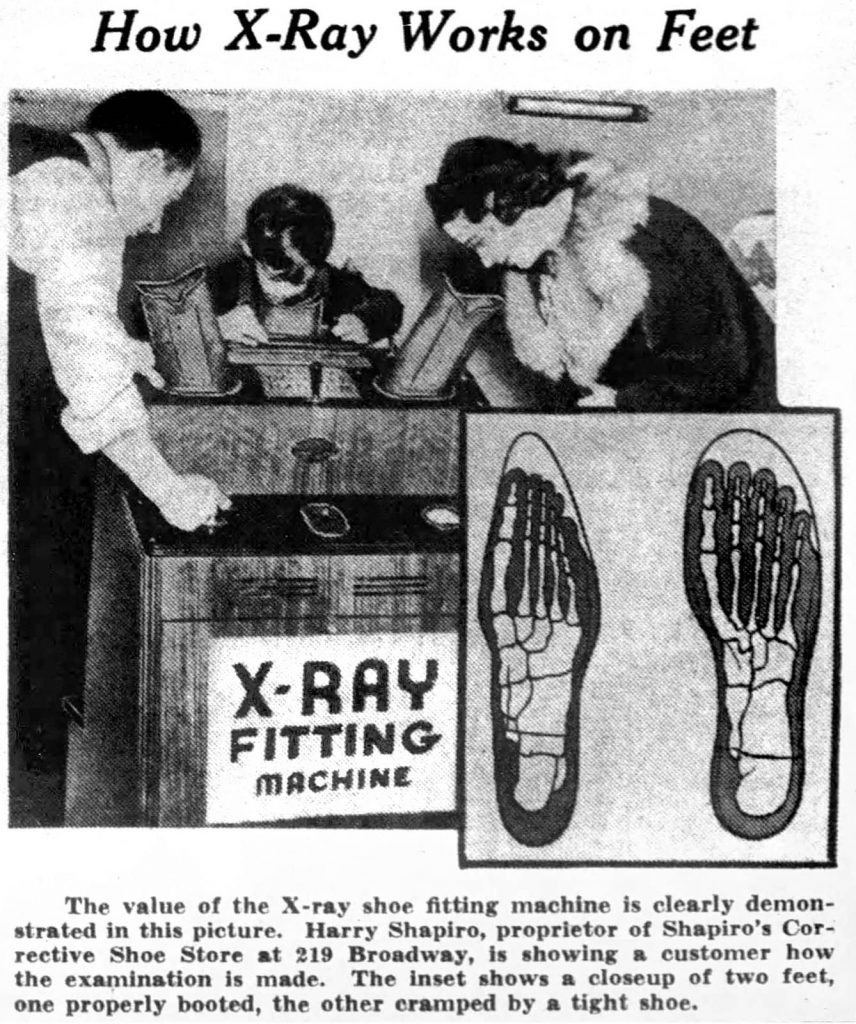
The unshielded radiation doesn’t just go to the soles of the feet, which are relatively insensitive to radiation exposure, but the X-rays randomly scatter, traveling up the legs and to the trunk of the body where the more sensitive tissues are located. As a result, the shoe salesperson would receive a whole-body dose of radiation, as would anyone else standing near the machine.
“The child’s tender foot with its soft bones and pliant muscle can be compressed into almost any type of shoe. The child, feeling no pain, cannot tell if the shoe fits properly or not. That’s why we insist upon fitting children’s shoes by X-ray.”
Customers were advised to visit the machines no more than 12 times a year. To the casual shopper, not a big threat; but the full-time salesperson? We’re not sure if they absorbed enough radiation to glow in the dark, but their daily exposure rates were, by today’s standards, through the roof.
Slowly, case reports involving skin burns and radiation sickness began to emerge.
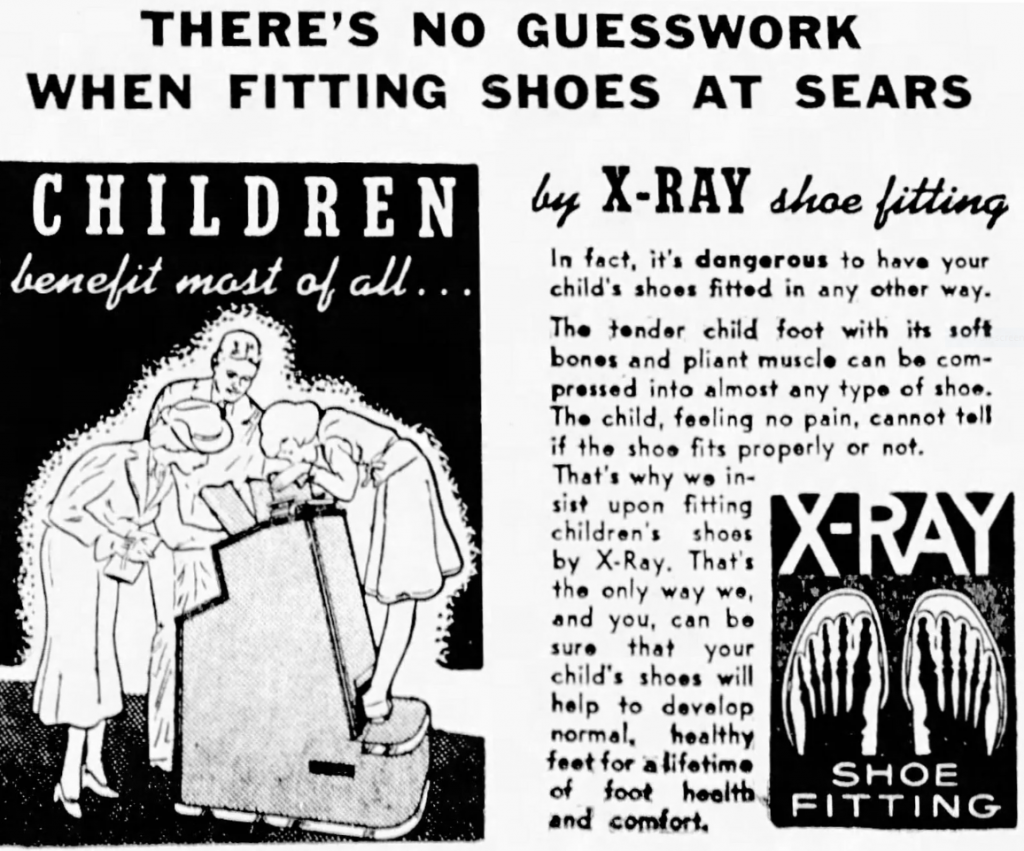
In 1957, Pennsylvania became the first state to ban the shoe-fitting fluoroscopes. In 1959, Switzerland followed suit, and by 1970, almost all states had banned their use. In 1981, a department store in Madison, West Virginia, finally pulled the plug on the last shoe-fitting fluoroscope in operation.
Due to the lack of records, there is no way to correlate cancers that arise decades later to those who were exposed to radiation by the shoe-fitting fluoroscope, one can only imagine.
Isn’t it ironic that the shoe-fitting fluoroscope was eventually banned for doing the very thing it was designed to prevent: harm your kid.
The fluoroscope didn’t provide a better fitting shoe, it exposed children to poisonous levels of radiation that is unsafe, unhealthy, and—knowing what we know today—unthinkable. You are invited to put your feet in an original 1938 Adrian Shoe-Fitting Fluoroscope (minus the live X-ray tube), and bath yourself—not in radiation—but in a world of technology that is today, too hot to handle.
Adrian shoe-fitting fluoroscope, along with a variety of other fantastic early medical devices, offer visitors a sobering reminder, to be careful what we wish for, that all that glitters is not gold, and unintended consequences are part of our quest to comprehend and manipulate our natural world.
Stay grounded.
